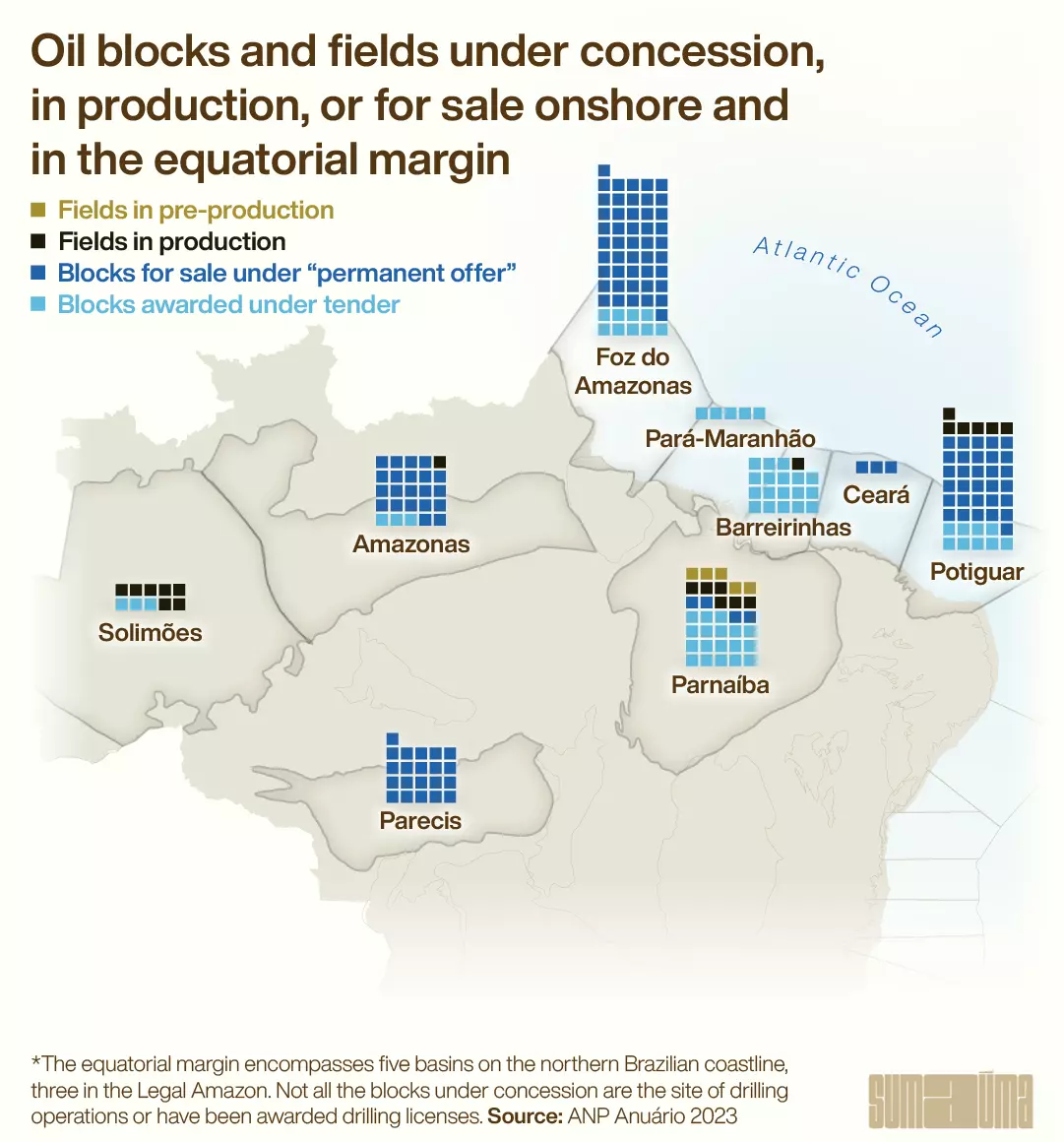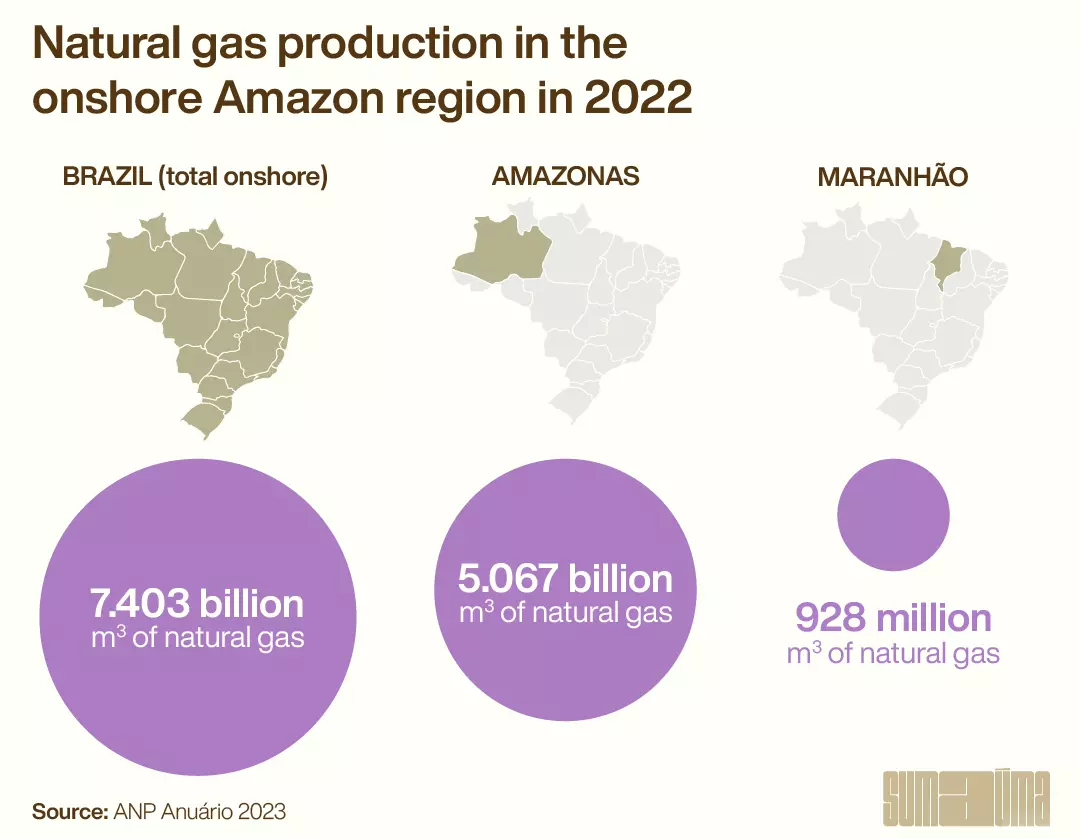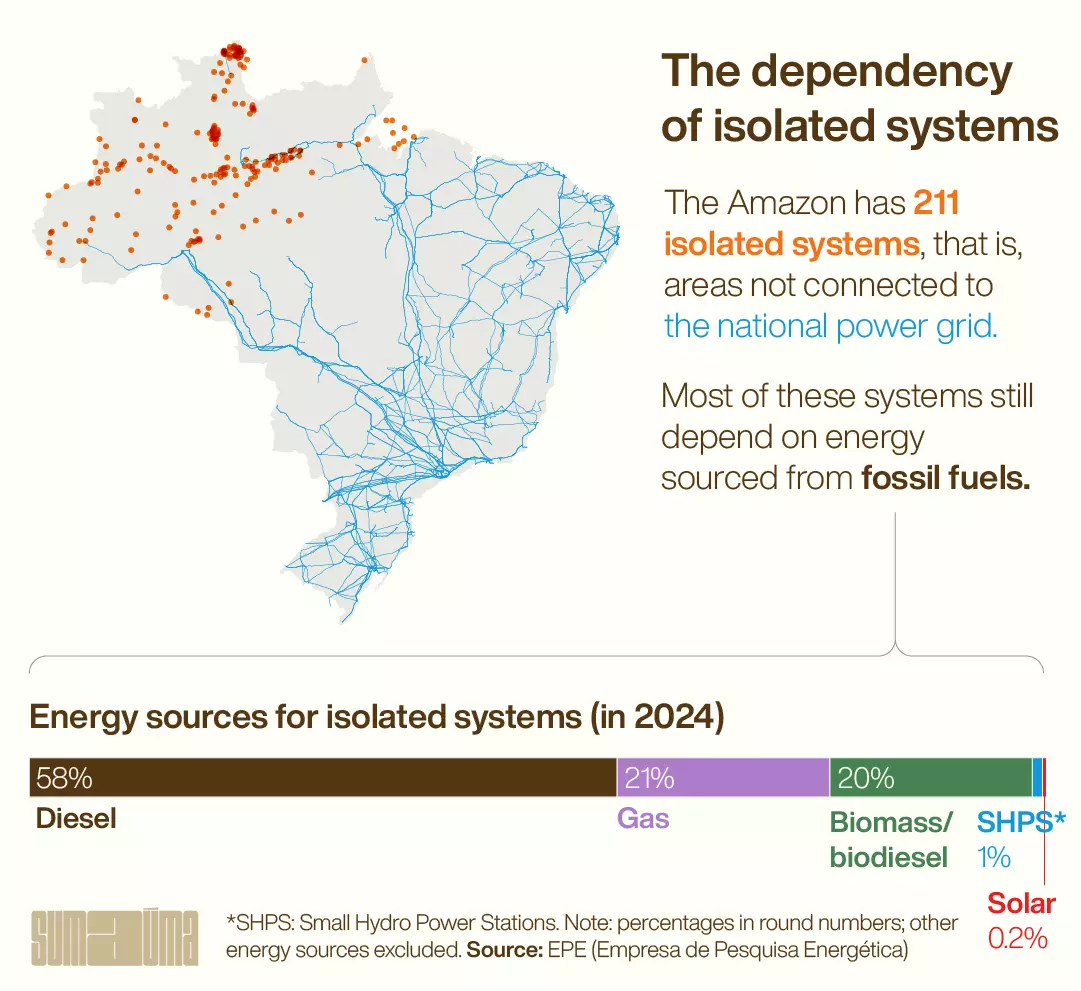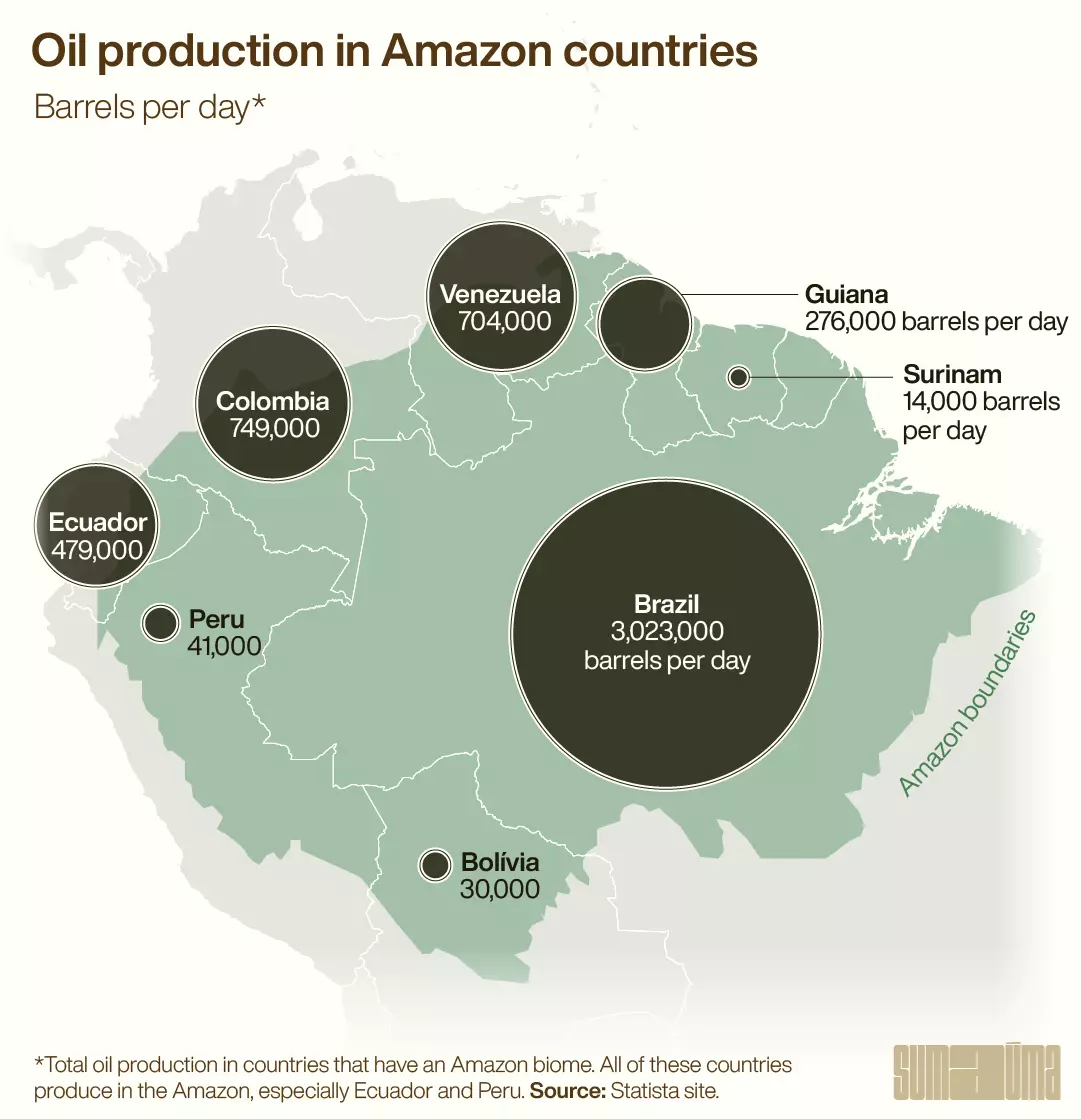At a time when the climate emergency is ever more undeniable, pressure for an immediate reduction in the production of fossil fuels, the prime cause of greenhouse gas emissions, will be a priority for civil society organizations at the gathering known as Amazon Dialogues and the subsequent summit of leaders from eight Amazon countries, to be held between August 4 and 9 in Belém. So far, however, Colombian President Gustavo Petro is a lone voice among national leaders in proposing a moratorium on new oil and gas contracts in the Amazon Biome.
The Brazilian government is divided over oil exploration in the Amazon, which is trending upward. Both onshore and offshore, within Brazil’s so-called Legal Amazon and along the country’s entire equatorial margin—running from the states of Rio do Grande do Norte to Amapá—companies have already been awarded 65 blocks, although none are producing oil or gas yet. Another 125 blocks are up for sale by Brazil’s oil regulator, known as ANP. The agency is also studying the possibility of awarding concessions on another 306 blocks in the region, 74 onshore in the states of Amazonas and Maranhão and 232 in the equatorial margin. In the latter case, tender authorization still depends on environmental guidelines or completion of a Sedimentary Area Environmental Assessment, which analyzes the overall impact of the oil chain in a given area.
The issue of fossil fuels will also be important at the Belém summit, which brings together signatories of the Amazon Cooperation Treaty Organization (ACTO), comprising Columbia, Bolivia, Brazil, Ecuador, Guyana, Peru, Suriname and Venezuela. The event is set to take place just days before an unprecedented referendum in South America. On August 20, Ecuadorians will go to the polls for early presidential and legislative elections and also decide whether to suspend oil exploration in Yasuní National Park, more specifically, in the Ishpingo, Tambococha, and Tiputini fields, known collectively as the ITT block. Dubbed “Noah’s ark” because of its biodiversity, Ecuador’s Amazon park is home to 610 bird species, 204 mammal species, and 139 amphibian species, and 99.73% of its plant life is original, according to Unesco, which declared Yasuní a “Biosphere Reserve.”
In Brazil, three months after the country’s environmental authority Ibama denied an environmental licensing request by the state-run oil giant Petrobras, which is keen to drill the first deepwater well in the Foz do Amazonas Basin, in the equatorial margin, the impasse continues. With support from the Mines and Energy Ministry, Petrobras has appealed the Ibama ruling, and its management assures journalists that the license will eventually be granted. Brazil’s Ministry of the Environment and Climate Change asserts that before any permits are handed out, the coast must undergo a Sedimentary Area Environmental Assessment.

Petrobras has its sights on oil in the Foz do Amazonas Basin, but for now, its drilling license has been denied. Photo: Victor Moriyama/Greenpeace
So far, 41 blocks have been awarded in this coastal strip, nine in the Foz do Amazonas Basin. According to an ANP report, 20 of the 41 awarded contracts have been suspended because of problems with environmental licensing. Still, the agency has 80 blocks in the equatorial margin under “permanent offer,” which means they can be sold without any bidding required. Today, Rio Grande do Norte is the only state where offshore drilling occurs on this coast. When the blocks were put to tender, starting in 2013, Brazil’s ministries of the Environment and of Mines and Energy jointly waived the need for any strategic evaluation. The current administration’s minister of the Environment and Climate Change, Marina Silva, argues that an environmental assessment would make the licensing process more secure.
For the representatives of the environmental, Indigenous, and community organizations who will be at the Belém summit, however, what is at stake goes beyond any technical considerations revolving around environmental licensing. At the Amazon Dialogues on August 4-6, before the presidents’ summit on August 8-9, oil production and energy transition will be discussed during one of five plenary sessions, where attendance is expected to exceed 10,000 people. Brazilian NGOs have organized a parallel event to rally support for abandoning the plan to open a new oil exploration frontier in the equatorial margin, according to Caetano Scannavino, coordinator of the Health and Happiness Project, an NGO working for almost 40 years with the traditional forest communities of the Amazon known as ribeirinhos. “This is a current, pan-Amazon topic. In Brazil, it is a decisive moment for figuring out what we want as the nation holding the largest share of the leading biome in biodiversity,” he says.
Scannavino points out that Brazil will be on the international stage for a time: in 2024 Rio de Janeiro will host the meeting of the leaders of the G20, a group that brings together the world’s largest economies, and in 2025 Belém will welcome the 30th UN Climate Change Conference, or COP30. The conference will take stock of the ten years since signature of the Paris Agreement, when countries committed to the goal of limiting the planet’s average temperature from rising more than 1.5°C above pre-industrial levels. Despite the risk that this objective will not be met, world oil production has picked up again, after a brief drop in 2020 at the height of the Covid-19 pandemic.
What is missing is “some statesman” who will declare that “the world is on fire and the cost of losing the 1.5ºC battle is far greater than any oil revenue,” says Scannavino, who is also a member of the Climate Observatory’s coordinating team. For him, the summit affords President Luiz Inácio Lula da Silva an opportunity to take a clear stand. “Leaving this oil under the ground gives us clout—as does the battle for zero deforestation—to demand that other countries do the same and maybe even [the clout to] lead a movement for more just global climate governance,” he says.
On July 8, when Lula and his colleague Gustavo Petro met in Leticia, a Colombian town bordering on Tabatinga, Amazonas state, the Brazilian president did not mention oil as a topic at the upcoming summit. Among other proposals, he mentioned the formation of an Amazonian parliament, the creation of a mechanism for the international certification of regional biodiversity products, and engagement in a joint fight against organized crime.
Pressure in the equatorial margin
If the government’s final decision is to keep everything as is, the future will see the opening of more oil and gas production fronts in the Amazon.
The largest holder of offshore blocks now awaiting environmental licensing in the equatorial margin is Petrobras, which has 17, followed by Shell with 11. In the document where Petrobras asks Ibama to reconsider its request to drill in the Foz do Amazonas Basin, the oil company contends that offshore exploration there “is essential to national energy security and sovereignty,” since forecasts are that pre-salt production will decline in Southeast Brazil as of 2030. Petrobras says production “will be developed in integrated fashion along with other energy sources and will contribute to making the energy transition process occur fairly, safely, and sustainably.”
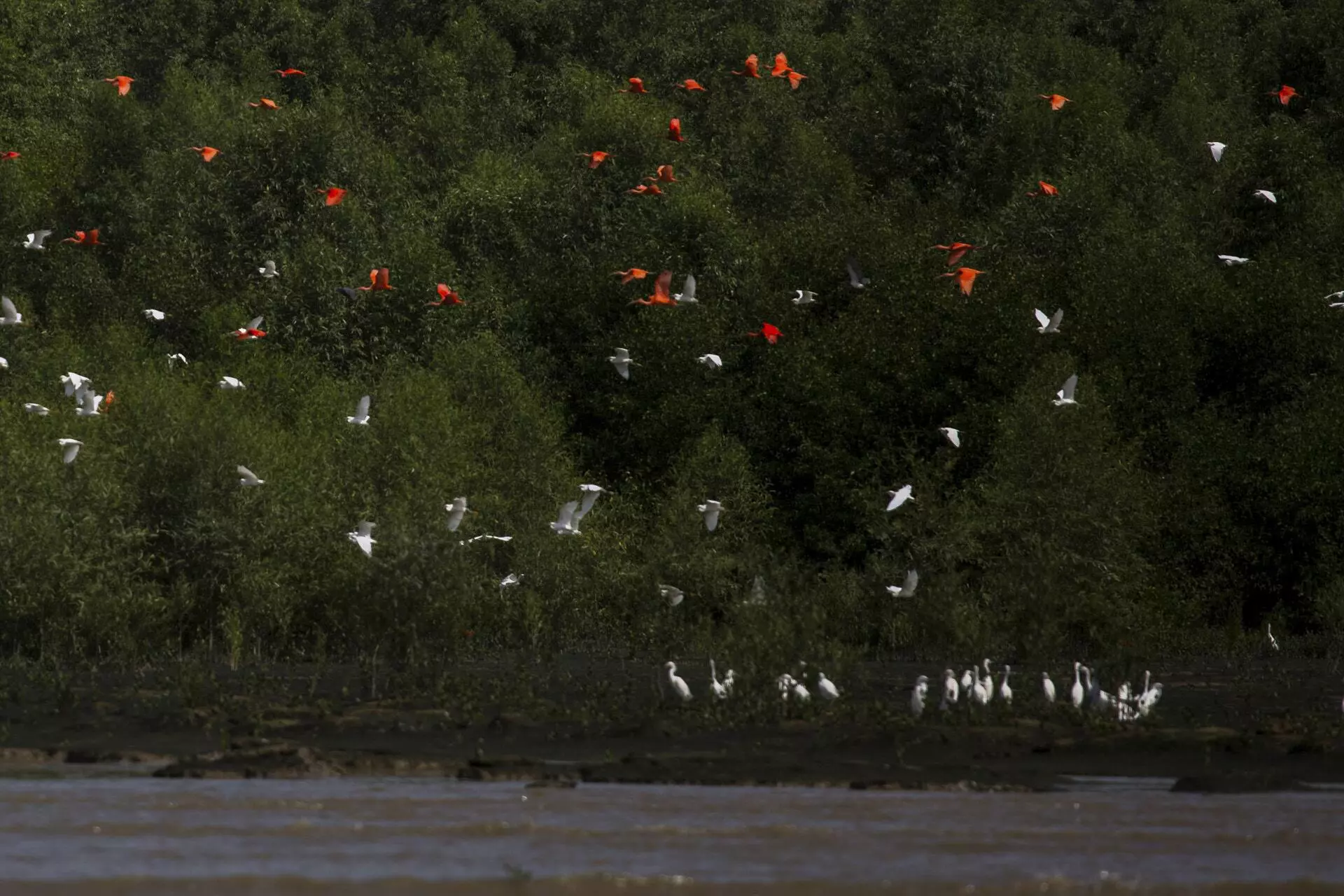
Scarlet ibises and herons fly over a mangrove swamp in Cabo Orange National Park on the coast of Amapá. Photo: Victor Moriyama/Greenpeace
On July 14, Petrobras sent Ibama a communiqué reiterating its position that a Sedimentary Area Environmental Assessment is not necessary for oil exploration permits to be issued in the Foz do Amazonas Basin. The document cites an early July ruling by Supreme Court Justice Kassio Nunes Marques, which states that the assessment is not binding for licensing. In a press release, Ibama replied that its denial of the license was based not only on the missing assessment but also on a “series of flaws in the commitments and studies submitted” by Petrobras. The environmental agency also insisted that the assessment “is a very relevant tool” along a “sensitive” coast where “the intention is to install more than 400 petroleum exploration lots.” At a public event held at the presidential palace in Brasilia on July 26, Rui Costa, Lula’s chief of staff, expressed support for Petrobras’s appeal to drill in the equatorial margin.
The current administration plans to present an energy transition and ecological plan this August or September, in which it will position the Amazon as a “green development center,” the president said on July 19. The plan is expected to include establishment of a regulated carbon credit market to control emissions from high-polluting industries such as steel and cement, but it is not yet clear what role fossil fuels will play in the project.
Dirty gas and electricity
Onshore, Petrobras has been exploring seven fields in the oil-rich Urucu province, in the Solimões Basin, Amazonas state, for over thirty years. The company mainly produces gas in Urucu, which is then conveyed to Manaus through a 370-mile-long pipeline that came onstream in 2009. Like gas extracted by other companies in the Amazon, the product is used mainly in thermoelectric power generation. Although four of the country’s largest hydroelectric dams are located in the region—and have their own negative impacts even though they produce renewable energy—a great deal of the electricity produced in the Legal Amazon today comes from fossil fuels, chiefly gas and diesel.
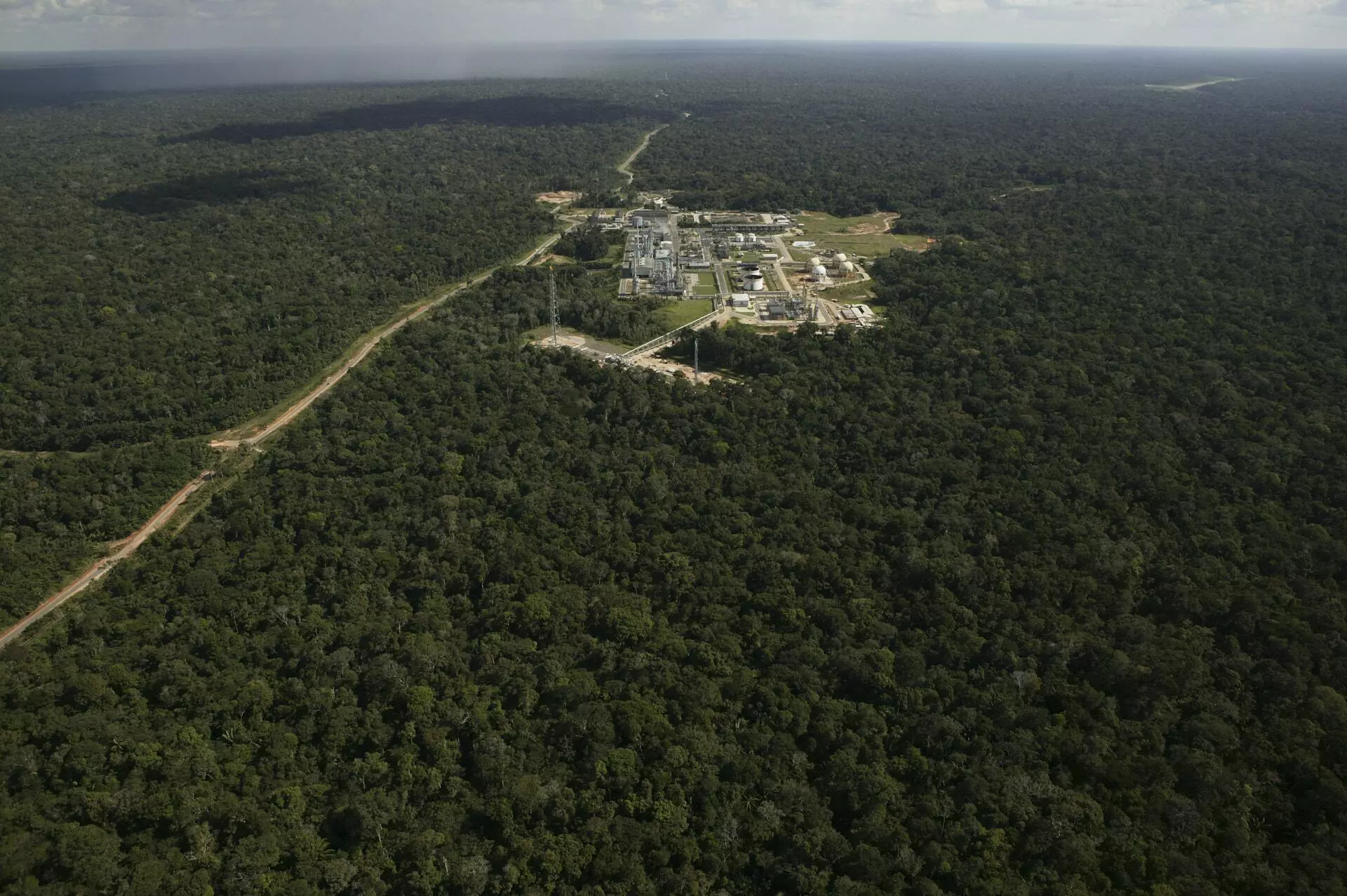
This oil and gas field in Coari, Amazonas state, in the Urucu oil province, is considered Brazil’s largest onshore reserve. Photo: Agência Petrobras/Geraldo Falcão
In recent years, the heaviest investor in onshore gas production in the Amazon region has been Eneva, a publicly traded company formed from the merger of MPX Energia and OGX Maranhão, both started by former billionaire Eike Batista. Eneva inherited and then expanded a gas production and energy generation hub in Santo Antônio dos Lopes, in Maranhão’s Parnaíba Basin, where it has five thermoelectric plants in operation and one under construction. It purchased 17 new blocks in the same region of Maranhão—outside forest areas—and another three in the Amazonas Basin, where it had already acquired the Azulão field from Petrobras, all in recent years. Eneva also purchased the Juruá field, in the Solimões Basin, likewise from the state-led enterprise, and it is committed to rehabilitating four wells there by 2026.
In September of last year, Eneva was one of only two companies to take part in the first auction of gas-fired thermoelectric plants called by Brazil’s national electric energy authority Aneel, in compliance with a rider to the bill that privatized state-run energy concern Eletrobras. As Rosana Santos, electrical engineer and executive director of E+Transição Energética Institute, explains, the rider was unusual because it was attached to the same article that laid out the sale of the former energy firm, resulting in a 600-plus-word paragraph without a single period. This is because, under the Brazilian Constitution, the president can only veto an entire article, not just parts of it. “The Senate knew the government at the time [of far-right President Jair Bolsonaro] was in an incredible rush to privatize Eletrobras because it needed cash. If the president vetoed the bill, there would be no privatization,” says Santos, who accompanied the process.
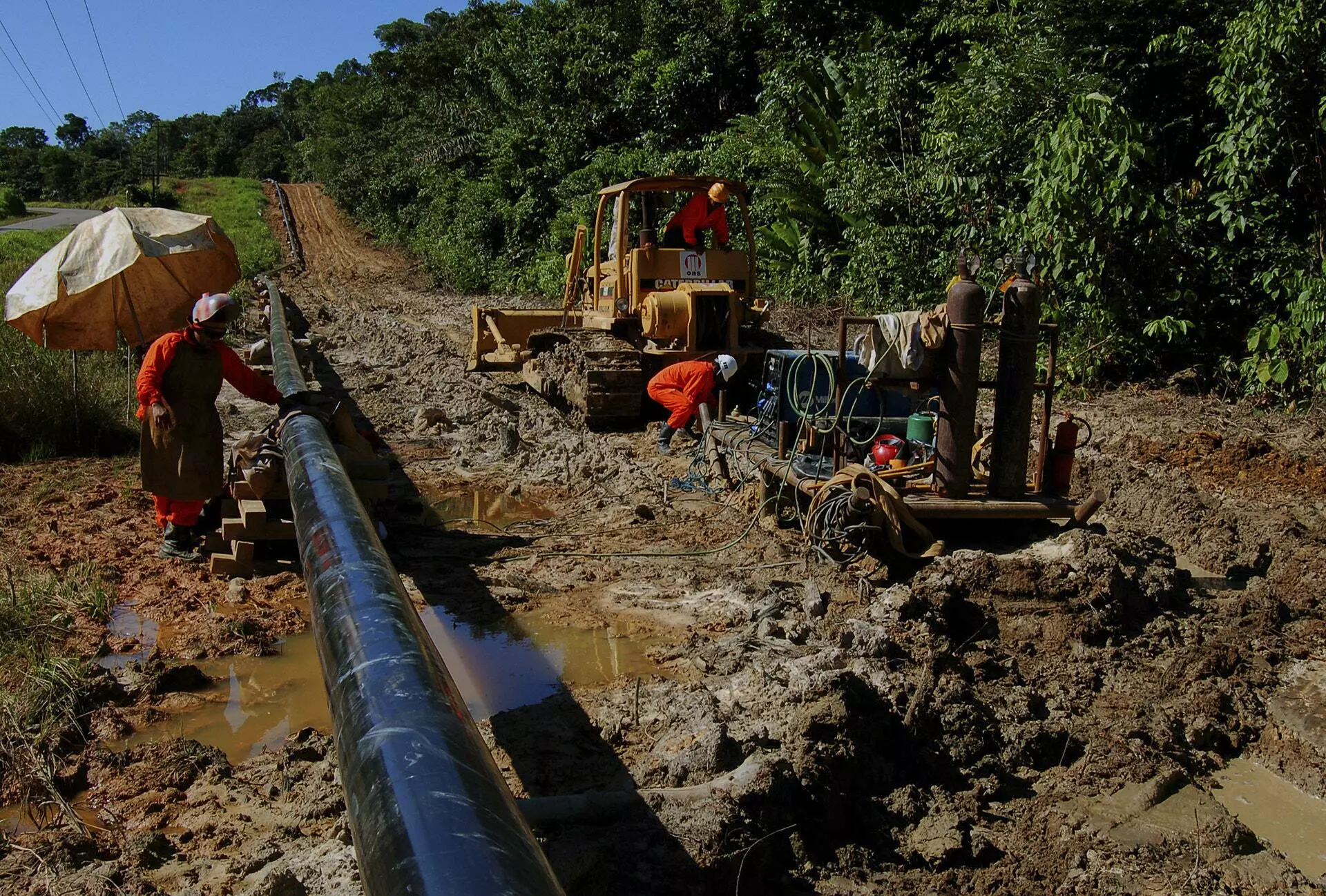
Work on the gas pipeline that will link the municipality of Coari to Manaus, capital of Amazonas. Photo: Alberto César Araújo/Amazônia Real
The rider required thermal power plants to be built in regions where there is no gas production, such as Central Western Brazil, and catered to a lobby representing distributors interested in pipeline construction. The key, however, is that the text required the national electrical system to contract new power plants totaling eight gigawatts— about 5% of current system capacity. These plants would also have to be “inflexible,” that is, generate energy at 70% of capacity at all times. Given that their energy is more expensive than wind and solar, gas-fired plants are usually contracted to be flexible, meaning they only enter the national grid when demand calls for it. The rider drew criticism from energy consumers, including big companies, who feared it might drive up the cost of electricity. As a result, only 0.75 of the first 2 gigawatts offered were purchased.
With the 590 megawatts it bought at auction last year, Eneva plans to build one of the two thermal power plants in the Azulão field, for a total capacity of 950 megawatts; it contracted the second plant during an earlier tender, in 2021. Both facilities will tie into the national grid, although only one under the exceptional “inflexibility” requirement laid out in the rider to the Eletrobras privatization bill. Today, Eneva is transforming gas from the Azulão field into liquified gas, which is stored in tanks and trucked to Boa Vista, capital of Roraima, where the company already has a thermal power plant, Jaguatirica II. The latter was contracted in 2019 when Aneel held a tender to supply electricity to Boa Vista and vicinity for 15 years.
On its website, Eneva says it contributes to energy transition by increasing gas-fired power generation and replacing fossil fuels that emit more carbon dioxide, like diesel. The company told SUMAÚMA that bodies like the International Energy Agency consider gas a “transition fuel” since it “guarantees energy security in periods of low efficiency for renewables.” Eneva cited years of drought in Brazil, like 2021, when hydroplants produced less power, and thermal plants had a relevant role in keeping the national grid running.
In Europe, gas is considered a “transition fuel” because it is replacing coal. Experts, however, maintain that it cannot be given the same status in Brazil, where conditions are favorable for generating renewable energy. Amanda Ohara, chemical engineer and coordinator of the Energy and Amazon initiative at the Brazilian NGO Institute for Climate and Society, argues that gas “has no place” in power production in Brazil today. “If we force its use, it will hamper the potential for increasing renewables, and this is bad not only from an environmental standpoint but also an economic one, because gas is a more expensive source,” she says.
Last year, a study by the Energy and Environment Institute, a Brazilian non-profit, showed how much fossil fuels play into power generation in the Amazon. A total of 17 thermal power plants feed into Brazil’s national interlinked power grid through the northern subsystem, which encompasses the states of Amapá, Amazonas, Pará, Tocantins, and Maranhão. Of the 17, 12 are gas fired while the others are powered by oil or coal. Six belong to Eneva and seven to Eletrobras, which in July announced it would sell off some of these to comply with its decarbonization plan. These five Amazon states, whose combined population represents a little over 10% of the country’s total, generated 27% of all energy in the national grid sourced from fossil fuel-fired thermal plants in 2020.
In addition to regions fed from the national grid, the Amazon, owing to its unique geographic and environmental characteristics, has its own 211 isolated systems, that is, systems not connected to national transmission lines; 3.1 million people reside in these areas, where electricity is generated locally. Roraima, with 73 isolated systems, is the only state that has no connection to the nation’s interlinked grid. Despite efforts to diversify energy sources, most of the power supplying these systems still comes from facilities that run on diesel or fuel oil, in addition to gas.
A study by the Energy Research Office, linked to Brazil’s Ministry of Mines and Energy, shows that 58.3% of the electricity expected to be produced by isolated systems in 2024 will come from diesel, 20.9% from gas, 19.6% from biomass and biodiesel, and only 0.2% from solar energy. According to the study, diesel-powered plants will account for 76.5% of the greenhouse gases emitted by these isolated systems, gas-fired plants will be responsible for 23.3%–and facilities fueled by renewables like biomass and biodiesel will emit only 0.2% of these planet-heating gases. “This situation reinforces the need to take actions meant to increase the share of renewables within the systems, in addition to efforts to connect isolated systems to the [national interlinked power grid],” the document concludes.
André Ferreira, executive director of the Energy and Environment Institute, says future Aneel auctions have to be monitored to check for any changes to this picture. “We have to see whether invitations to tender will follow the guidelines and design of auctions aimed at energy transition,” he points out. “They may, but there will be some friction because the gas industry is interested in this market and will use the argument that it emits less than diesel. But what needs to be debated is if isolated systems will refrain from gas and use renewable sources.”
Eneva told SUMAÚMA that it has been working to “enable the introduction of gas to isolated systems,” not just in Roraima, replicating its business model, which combines gas production with thermal power plants.
The study New Economy for the Brazilian Amazon—a project to generate more jobs and income in the region while also ensuring the forest remains standing—offers a proposal that would fix the problem with the local electrical system. The document, drawn up by more than 70 Brazilian researchers and released in June of this year, recommends that isolated systems rely on biomass sourced both from urban and agricultural waste as well as from forest products, along with solar energy. The idea is to install solar equipment at hydroelectric dam reservoirs to connect into the national grid. Under the New Economy project, no new hydropower plants would need to be built.
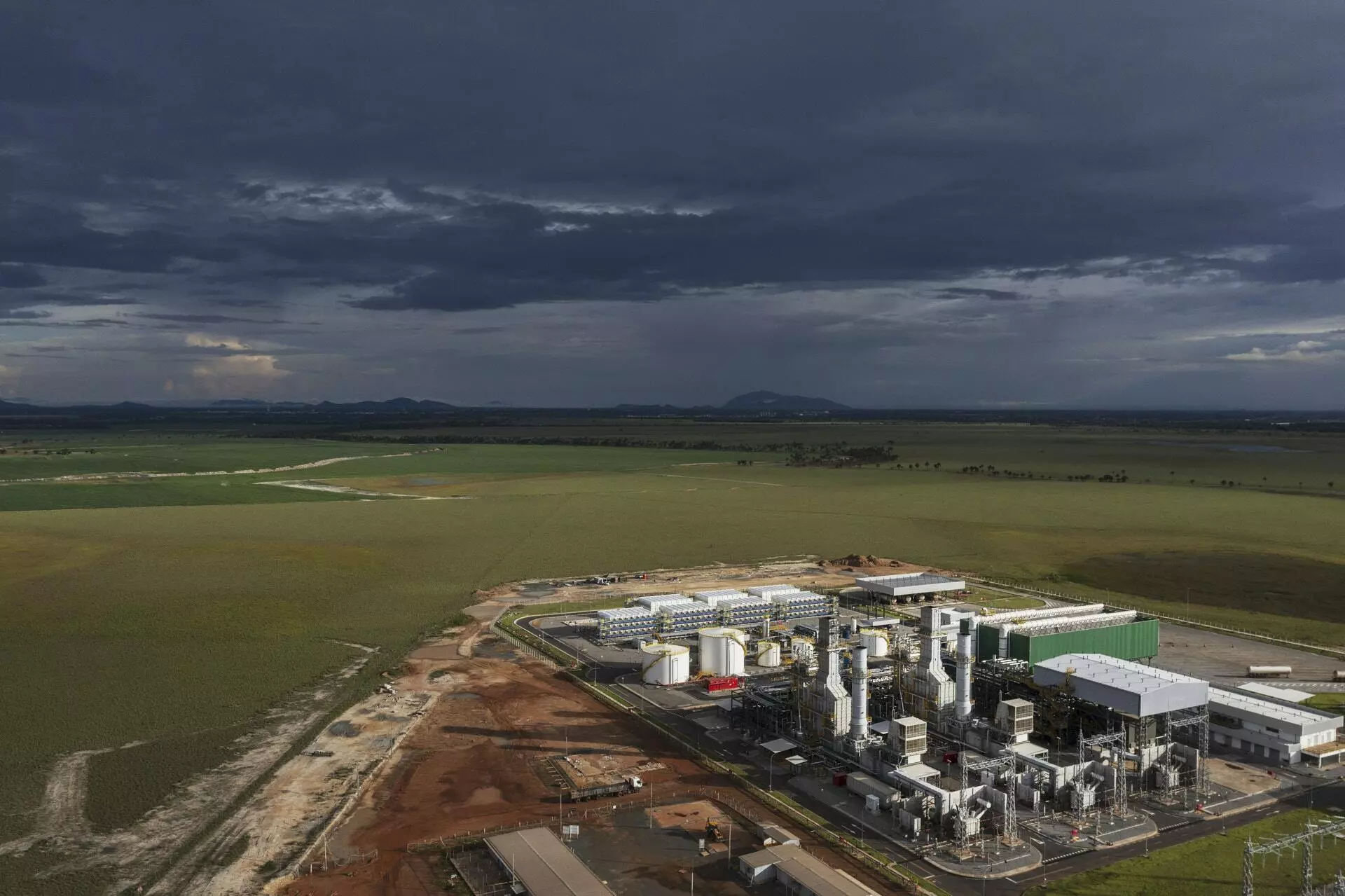
Jaguatirica II, a thermoelectric power plant in the rural área outside Boa Vista, capital of Roraima, the only state not linked to the national grid. Photo: Lalo de Almeida/Folhapress
Conflict with traditional communities
All eight countries that are included in the Amazon rainforest and will be present at the Belém summit produce at least some oil and gas, with the largest amount coming from Brazil. There is also substantial fossil fuel exploration in parts of the rainforest in Peru and Ecuador, with growing socio-environmental problems.
A study published by Oxfam in 2020 counted 474 oil spills in the Peruvian Amazon between 2000 and 2019. From 2015 to 2019, more than 100 spills impacted Indigenous land. In Ecuador, the YASunidos coalition, which fights to end oil exploration in Yasuní National Park, reported 23 incidents between 2015 and 2022, ranging from minor spills to a fire. The annual report issued by ANP, Brazil’s oil regulator, cites 2,415 incidents in 2022, of which 20 were considered “serious,” but does not specify where these occurred. The report does not mention any accidents in the Amazon.
The Azulão gas field, between the Amazonian cities of Silves and Itapiranga, is the subject of a civil lawsuit brought against Eneva by the Silves Association for Environmental and Cultural Preservation and the Mura Association, which represents 190 families from three Indigenous communities in the region. The association and Indigenous people, who live in two territories located 55 miles from the gas field, have said the water in the region has become contaminated and animals and birds have fled the area. They requested Ibama take over licensing for the project, which will include thermoelectric plants. The original license for gas exploration in the Azulão field was issued to Petrobras in 2013 by the Amazon Environmental Protection Institute (IPAAM), a government agency. Eneva is in the process of applying for a license to build pipelines that would transport gas to the thermal power stations that are going to be constructed in the area.
In May, the Federal Court issued an injunction to suspend operations in the Azulão gas field, but Eneva was able to quash it in a circuit court appeal, arguing that they wouldn’t have enough gas to run their thermoelectric plant in Roraima. The conciliation hearing between both parties in July was inconclusive: Judge Maria Elisa Andrade requested further evidence from Ibama and from the National Foundation of Indigenous People (Funai).
The installation of an industrial gas complex in the Parnaíba Basin, in the state of Maranhão, also negatively impacted neighboring communities while under operation by Eike Batista’s OGX. According to the “Map of Conflicts – Environmental Injustice and Health in Brazil,” published by the Oswaldo Cruz Foundation, the traditional communities of Santo Antônio dos Lopes reported the company had cut off access to the palm groves where they harvest babassu coconuts and destroyed the land where they grew crops and raised animals. The affected families were eventually resettled, but according to Oswaldo Cruz Foundation researchers, some of the compensatory measures laid out by Ibama were never met.
In Ecuador, the referendum that will determine whether or not oil production is suspended in Yasuní Park is a years-old demand from the Confederation of Indigenous Nationalities and other entities, such as the Federation of University Students. The YASunidos coalition collected 584,000 signatures, enough to refer the request to the National Electoral Council. The process underwent several twists and turns before finally being approved in May of this year by the Constitutional Court of Ecuador, which is the equivalent of the Federal Supreme Court of Brazil.
The campaign for the referendum has been fierce, said Alberto Acosta, former minister and assemblyman in Ecuador, who has traveled all over the country to collect “yes” votes for the referendum. Since the question will be phrased “Do you agree that the government should keep the oil in the ITT block permanently in the ground?” voting “yes” means voting against further oil exploration in the region. According to Acosta, an “unholy extractivist alliance”—composed of the current government headed by Guillermo Lasso (who called for an early election to avoid an impeachment process), businesses in the sector, and big media—has joined forces to vote “no.” “I would even call it economic terrorism. They’re saying that if we don’t explore for oil in the ITT block, it’ll spell disaster for the economy, which is a lie,” Acosta says. “The figures overestimate the quality of the oil, which is bad, and the cost of extraction, which is high.”
Acosta was Ecuador’s minister of energy and mines during Rafael Correa’s first term in office when a proposal was drawn up for the creation of a USD 3.6 billion international monetary fund to compensate Ecuador for not exploring for oil in Yasuní Park. A borehole had yet to be drilled in the ITT block at the time. Since then, 50,000 barrels of oil have been extracted per day, equal to 12% of the country’s production. The UN pledged to administer the fund and several countries promised donations, but only USD 13 million were raised. Correa—who was convicted for corruption and lives in exile in Belgium—will vote “no” (meaning in favor of oil exploration), as will the presidential candidate of his political party, former deputy Luisa González. The only presidential candidate voting “yes” who has any real chance of winning in the August 20 electoral contest is Indigenous leader Yaku Pérez.
Alberto Acosta believes the reason the international fund failed was that Correa’s government “didn’t have a long-term strategy.” During his presidency, Correa took out loans from China to be paid back in oil. Today, the state-owned oil company Petroecuador is operating in Yasuní Park in partnership with Chinese businesses. Alberto Acosta was president of the Constituent Assembly that drafted a new constitution in 2008, the first constitution to enshrine the rights of “Pacha Mama,” or Nature. “It’s time for concrete actions. If the country votes to dismantle this oil infrastructure, Ecuador could once again be a trailblazer,” he says.
Like Caetano Scannavino, with the Health and Happiness Project, Acosta also supports the need for a fairer global governance on climate issues. Although there is no proposal for an international fund in Ecuador today, wealthier countries still have “a huge debt to the global south for the part they played in the historical destruction of the environment,” Acosta says. He believes whoever gets elected to office in Ecuador should be able to secure more international financial backing for climate challenges, since extreme events caused by global heating have become increasingly frequent.
The weight of Petro
The notion that those countries that preserve the Amazon rainforest should receive compensation will be front of mind for political leaders at the Belém summit. Colombian President Gustavo Petro himself suggested, in an article published in the Miami Herald on July 12, that so-called developing countries’ external debt should be exchanged for climate actions—this debt has no bearing on Brazil, though it does on many countries across Latin America and Africa. President Petro’s stance against new oil contracts in the Amazon takes on additional weight when we consider that Colombia exports fossil fuels and relies on oil revenue to cover a substantial part of government spending.
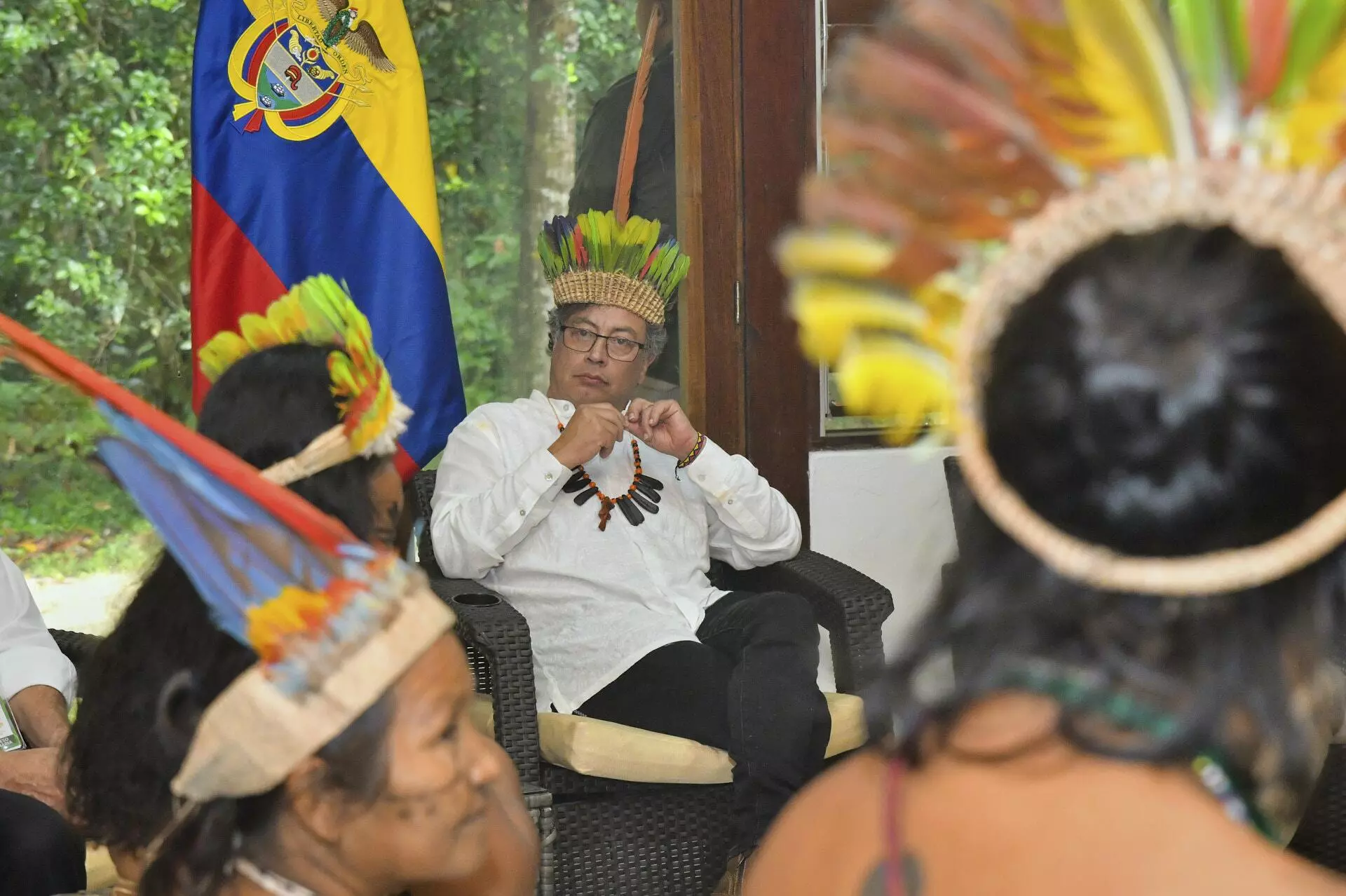
Colombian President Gustavo Petro at the technical/scientific meeting held in Leticia, Colombia. Photo: Leo Queen/Presidency of Colombia
Colombia is currently the second largest oil producer of the eight countries that will be represented at the summit. Though the country does not currently engage in substantial oil exploration in the Amazon rainforest, its oil frontier had already started expanding toward the region by the time Petro took office last year, said Colombian Tatiana Roa Avendaño from the National Health, Environment, and Labor Association (known as CENSAT Agua Viva in Spanish). “This frontier is being opened very slowly because there’s been a lot of resistance and because there are large national parks in the Colombian Amazon, and exploration isn’t permitted in national parks,” explains Avendaño, who supports a fair energy transition.
Avendaño attested that Petro, who took office in August of last year, has so far kept his campaign promise not to enter into new oil contracts. But she also highlighted inconsistencies within the government as well as mounting pressure from the opposition, which recently led to the resignation of the mines and energy minister, Irene Vélez, who came from an academic background. “There have been no auctions in the 11 months since Petro took office. Even though he hasn’t conceded, I wouldn’t be surprised if an offer came in soon,” she affirms. A major loss would be the authorization of gas exploration in the Caribbean, with the gas being sold as a “transitional fuel,” much like in Brazil. “Previous governments found reserves in ultradeep water, with all the technical implications and environmental risks to a sensitive area with high levels of tourism,” she says.
It has become clear that the entire Amazon region grapples with these issues, since many of the countries attending the Belém summit face similar dilemmas. One thing that sets this moment apart from others since the UN Framework Convention on Climate Change was adopted in 1992 is the growing evidence that humankind is falling behind on its commitment to the planet. “Even though the climate crisis is a result of fossil fuel use, this is the first time in 30 years that it is being brought into the conversation,” Tatiana Avendaño observes. “It’s important for countries with oil reserves to start talking about changing how things are done, setting aside exploration-free zones, and then getting the countries that still consume most of the world’s oil reserves to do the same.”
Fact check: Plínio Lopes
Spell check (Portuguese): Elvira Gago
Translation into Spanish: Meritxell Almarza
English translation: Diane Whitty and Julia Sanches
Photography editing: Mariana Greif
Page setup: Viviane Zandonadi and Érica Saboya
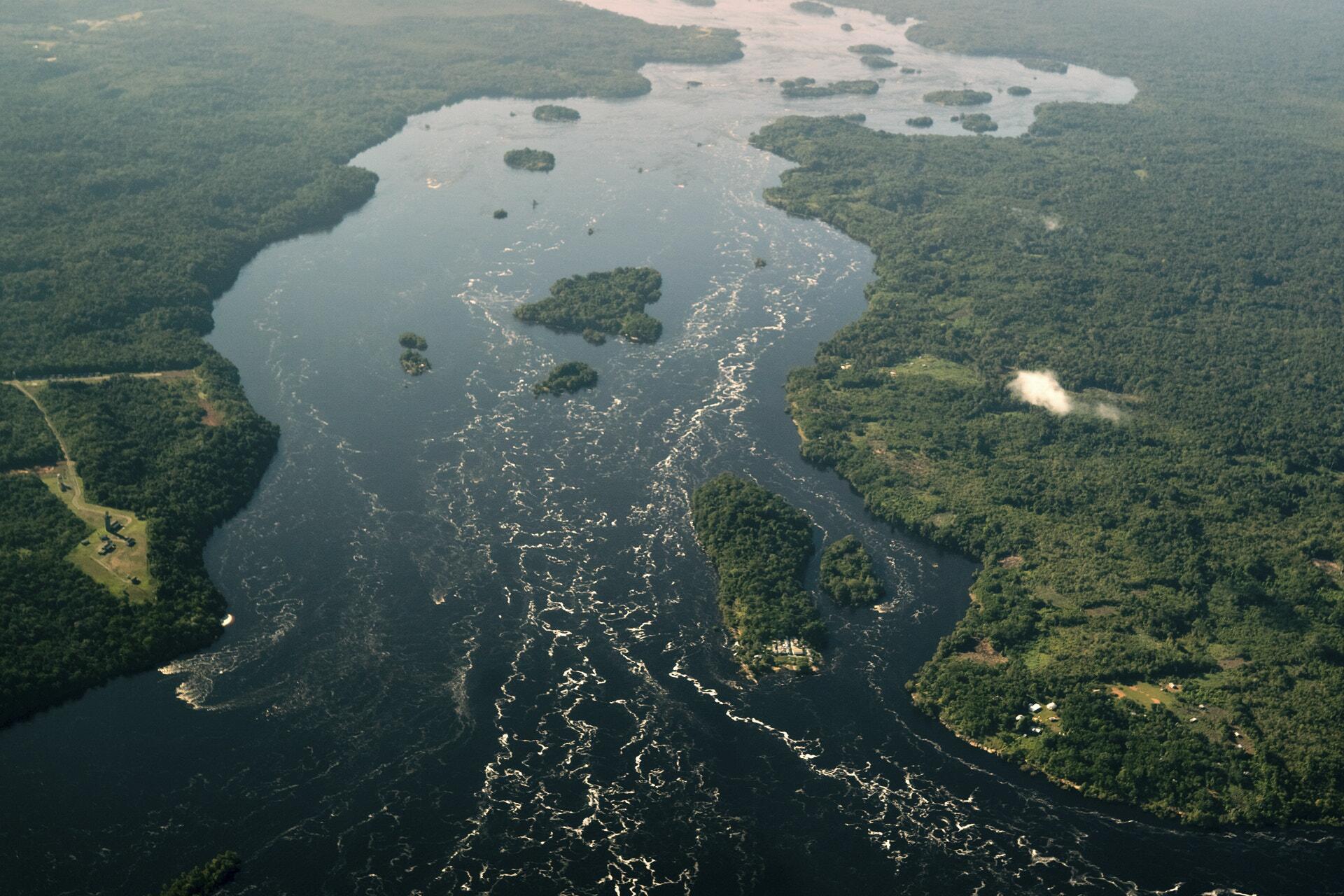
The Alto Rio Negro Indigenous Territory, in the municipality of São Gabriel da Cachoeira, Amazonas state, on the border of Brazil and Colombia. Photo: Christian Braga/Greenpeace




